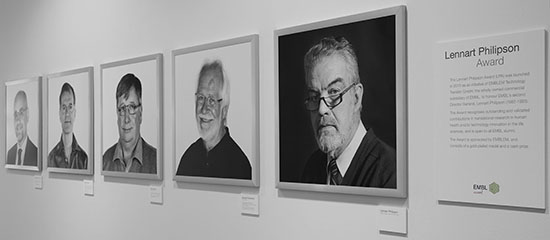
2025 winner: Florent Cipriani
EMBL: Head of Instrumentation, EMBL Grenoble, 1991 -2020
2025: Retired
“I spent nearly 30 years in Grenoble developing beamline instruments to help structural biologists carry out their most challenging projects. In the early ‘90s, at the newly built ESRF crystallography beamlines, several hours were necessary to collect an X-ray diffraction data set. Today, it only takes a few seconds, and beamlines can operate in a pipeline with our automated crystal harvesting system. It is a great honour to see our work awarded. I am particularly grateful to Stephen Cusack for his trust and support over the years, and to EMBLEM for its key contribution in making our instruments available to the global scientific community.”
Announcement of winner: February 2025
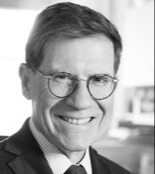
2024 winner: Giulio Superti-Furga
EMBL: Team Leader, Developmental Biology, 1991 -2004
2024: Scientific Director and Research Group Leader at the Research Centre for Molecular Medicine (CeMM), Vienna.
“When I came to EMBL in 1991, I met Lennart Philipson, a true mentor who would share advice over walks, pipe in hand. EMBL, for me, has been a beacon of inspiration and support. This spirit has driven my work in community building and translational research at Cellzome, CeMM, startups in Vienna, and with EU-LIFE. It’s the backbone of my future projects in Sicily. The joy of discovery and the commitment to making a real impact in precision medicine are legacies of my EMBL experience.”
Announcement of winner: March 2024
Watch Alumni Awards Ceremony
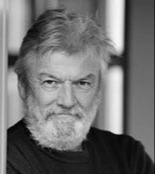
2023 winner: Desmond Higgins
EMBL: Group Leader, EMBL-EBI, 1990-1996
2023: Professor of Bioinformatics, University College Dublin, Ireland.
“I spent 35 years working on sequence alignment methods. The environment at EMBL gave me the opportunity to develop this work and to collaborate with Toby Gibson and Julie Thompson to make Clustal W and Clustal X. It is over 30 years since I first met Lennart Philipson at EMBL and it is a great honour to receive the award.”
Announcement of winner: March 2023
Watch Alumni Awards Ceremony

2022 winner: Sara Courtneidge
EMBL: Group Leader, Developmental Biology, 1985-1994
2022: Professor, Oregon Health and Science University, Portland, USA.
“At EMBL, we studied the Src family of tyrosine kinases, which are cellular oncogenes,” Courtneidge said. “Wanting to learn and contribute more directly to translational cancer research, I then joined SUGEN, a biotech company focused on defining the kinome, and developing kinases inhibitors. Even when I returned to the non-profit sector, I maintained a commitment to translational research, and also support and advise others in this arena. I am deeply appreciative of the support from EMBL which facilitated my career.”
Announcement of winner: June 2022
Watch Alumni Awards Ceremony
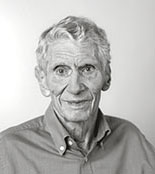
2021 winner: Kenneth Holmes
EMBL: Head of EMBL Hamburg, 1975-1977
2021: Retired, Heidelberg (Former MPI Director)
“We needed a stronger x-ray source that could record a muscle contracting. I had read Julius Schwinger’s work on the theory of Synchrotron Radiation. DESY in Hamburg was setting up such an electron ring. Gerd Rosenbaum and I carried out an experiment at DESY using synchrotron radiation to get diffraction from a muscle specimen. This worked, and we were delighted when Sir John Kendrew and EMBL decided to support the project. DESY encouraged us to set up a bunker (bunker 2) for X-ray experiments on biological samples. Bunker 2 was the beginning of what would become the first EMBL Outstation. It is a great honour to have been presented with the Lennart Philipson award for the work that was carried out by Gerd Rosenbaum and myself 50 years ago in Hamburg.”
Announcement of winner: April 2021
Watch Alumni Awards Ceremony
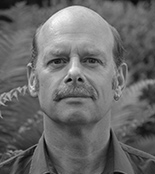
2020 winner: John van der Oost
EMBL: Postdoc, Saraste Group, Structural and Computational Biology, 1990-1992.
2020: Professor, Wageningen University & Research, Wageningen, the Netherlands
“While studying anti-virus defense strategies of bacteria, my team discovered that CRISPR-Cas and Argonaute systems target DNA, that their specificity can easily be adjusted, and that they can be functionally transplanted to other organisms. This is a beautiful example of the rapid translation of a bacterial genetics project to genome editing applications, ranging from biotechnology to human gene therapy. I feel privileged to have participated in this adventure. Moreover, thirty years after meeting Lennart Philipson at EMBL, it is a great honor to receive the award with his name.”
Announcement of winner: March 2020
Watch Alumni Awards Ceremony

2019 winner: Patrick Baeuerle
EMBL: Predoc, Huttner Group, Cell Biology and Biophysics, 1986-1987.
2019: Executive Partner, MPM Capital, Cambridge MA, USA
“Our own T cells have a unique potential to cure cancer. I was fortunate to help develop a novel therapy for acute lymphoblastic leukemia that works by enabling a patient’s T lymphocytes to connect to its cancer cells and kill them in a unique fashion. This drug is called Blincyto and is on the market since 2015. It contributes to a recent revolution in cancer therapy referred to as immuno-oncology. I highly appreciate the role EMBL played in my career path ultimately making me a drug developer and serial entrepreneur.”
Announcement of winner: February 2019

2018 winner: Raffaele De Francesco
EMBL: Postdoc, Cortese Group, Genome Biology, 1988-1990.
2018: Head of Virology, Institute for Molecular Genetics, Milan, Italy.
“In the early ‘90s, the inability to propagate HCV in the laboratory was seen as a major obstacle to the identification of specific antivirals. Our discoveries of the NS3/4A protease and NS5B polymerase allowed the scientific community to start looking for inhibitors of these key viral enzymes long before we were able to work with the actual virus. The time I spent as a postdoc at EMBL, surrounded by great scientists working in a highly collaborative spirit, was very inspiring and taught me how to always use a multidisciplinary approach to address complex scientific problems.”
Announcement of winner: March 2018

2017 winner: Matthias Mann
EMBL: Group Leader, Instrumentation, 1992-1998.
2017: Director, Department of Proteomics and Signal Transduction, Max Planck Institute for Biochemistry, Germany and
Program Director, the Novo Nordisk Foundation Center for Protein Research, University of Copenhagen.
“Mass spectrometry has become an indispensable tool in molecular biology and this could not have happened without the fantastic environment at EMBL. My group greatly benefited from the unique concentration of skills, resources, personalities and ambition that characterised the place then and now. I am very happy that we succeeded in making first mass spectrometry and then proteomics a viable part of the tool kit for biologists and I am especially grateful for Lennart Philipson’s unwavering support of this initially exotic technology and of our group. ”
Announcement of winner: March 2017
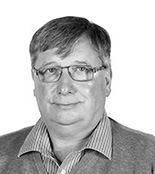
2016 winner: Ernst Stelzer
EMBL: Group Leader, Cell Biology and Biophysics, 1983-2011.
2016: Professor in the Life Sciences Department (FB15, IZN) and the Buchmann Institute for Molecular Life Sciences (BMLS) at Goethe University, Frankfurt am Main, Germany.
“Light sheet-based fluorescence microscopy is the result of more than 25 years of hard work. It is also an excellent story of a suitable environment that can apply results of research in physics. As a member of several Units, I saw the limits of “flat biology”, the challenges of maintaining a specimen’s three-dimensionality and the necessity for time-lapse imaging. But, I also had the resources to tackle challenges in a biological manner”.
Announcement of winner: January 2016
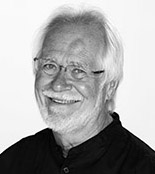
2015 winner: Jacques Dubochet
EMBL: Group Leader, Structural and Computational Biology, 1978-1987.
2015: Retired, Former Professor at University of Lausanne, Morges, Switzerland.
“The basic work was done 30 years ago, at that time we had 35Å resolution. People said it was blobology. Then others made big progresses in data processing and instrumentation. Now, I am retired and they get 3.5Å atomic resolution and the method has become very important. For me, it’s very rewarding, interesting and enjoyable.”
Announcement of winner: December 2014
Poster – Awards Ceremony, 10 July 2015

